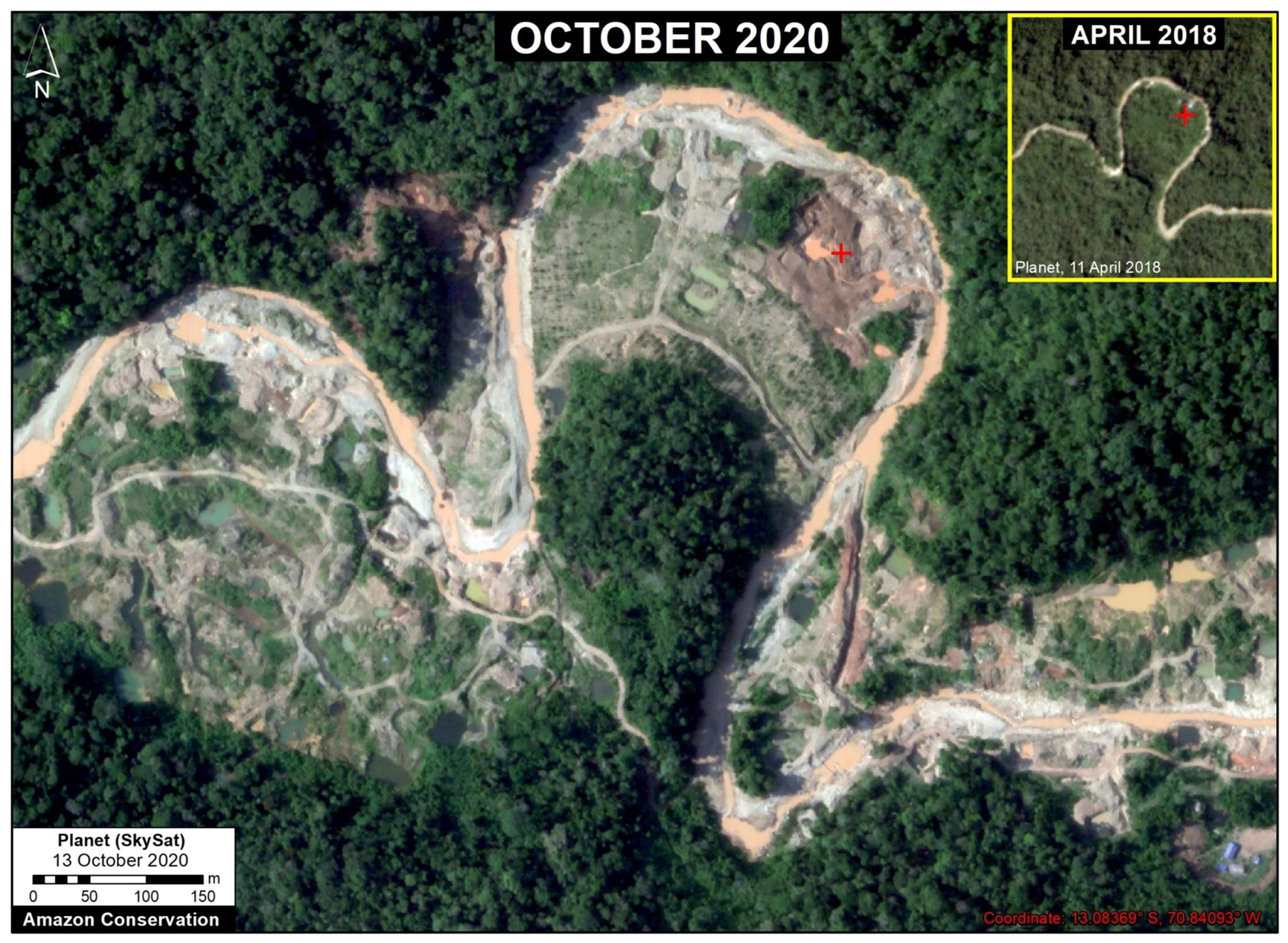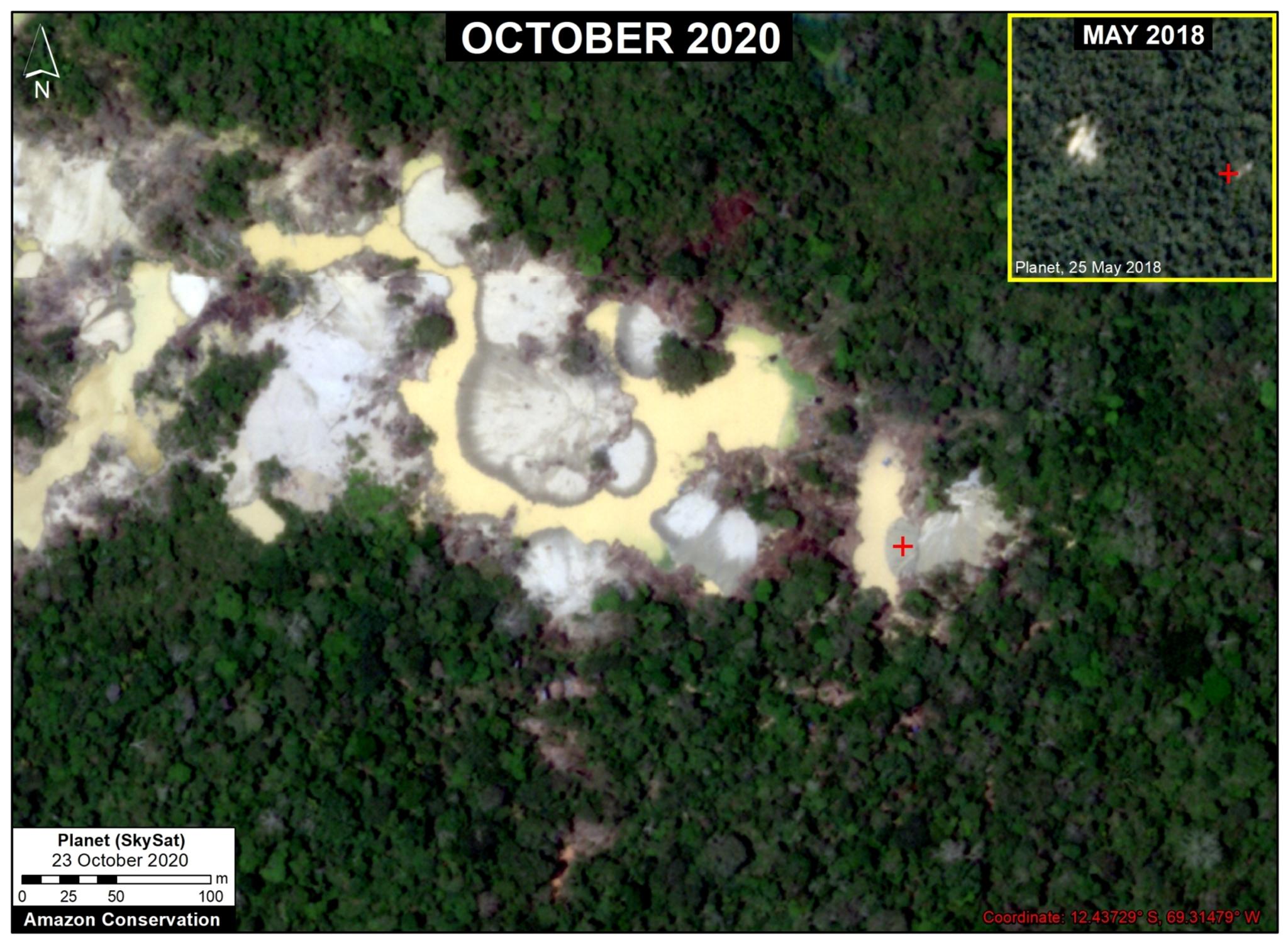How Amazon Conservation is Cracking Down on Illegal Mining with Planet Data
For the past two decades, Amazon Conservation has protected over 8.15 million acres of rainforest in Peru and Bolivia. The Amazon Conservation develops innovative research and solutions through science and technology at their living laboratories that have provided tools to government and forest users to protect their lands while empowering hundreds of indigenous communities. One initiative that was born out of the DC-based Amazon Conservation is MAAP (Monitoring of the Andean Amazon Project). This initiative, which launched in 2015, is dedicated to presenting original analysis related to the field of real-time deforestation monitoring. “The vastness of the Amazon can be a major challenge to its conservation, but technology, especially satellites, have emerged as an extremely powerful tool,” said Dr. Matt Finer, Senior Research Specialist at Amazon Conservation and Director of their Monitoring of the Andean Amazon Project (MAAP). “With the latest generation of satellites and related algorithms, we have been able to go from annual to more real-time monitoring. And it is this real-timeness that makes all the difference in linking this technology with effective policy action on the ground to reduce and avoid deforestation.” As a young and dynamic field, real-time deforestation monitoring requires the MAAP methodology to monitor change over time. “Planet has been at the core of our methodology since 2016,” said Finer. “At MAAP, we are not married to any particular technology, we are always just seeking out the best available tools. And Planet has been the best imagery source for real-time monitoring since 2016.” MAAP aims to document the most urgent deforestation cases in near real-time and identify the direct causes of deforestation in the Andean Amazon. In doing so, MAAP is able to better understand larger-scale deforestation patterns, hotspots, and drivers. With this information, MAAP is able to improve policy and conservation action based on this cutting-edge technical information. “Our primary audience is decision-makers and government officials who have the ability to incorporate this information in official policy. An additional important audience is civil society, journalists, researchers, and the public, who get together to help create pressure to drive policy. We hope the end result is reduced deforestation,” said Finer. [caption id="attachment_146220" align="aligncenter" width="1600"]



Ready to Get Started
Connect with a member of our Sales team. We'll help you find the right products and pricing for your needs


